WARNO: Early Access Impressions
The Cold War is hot again
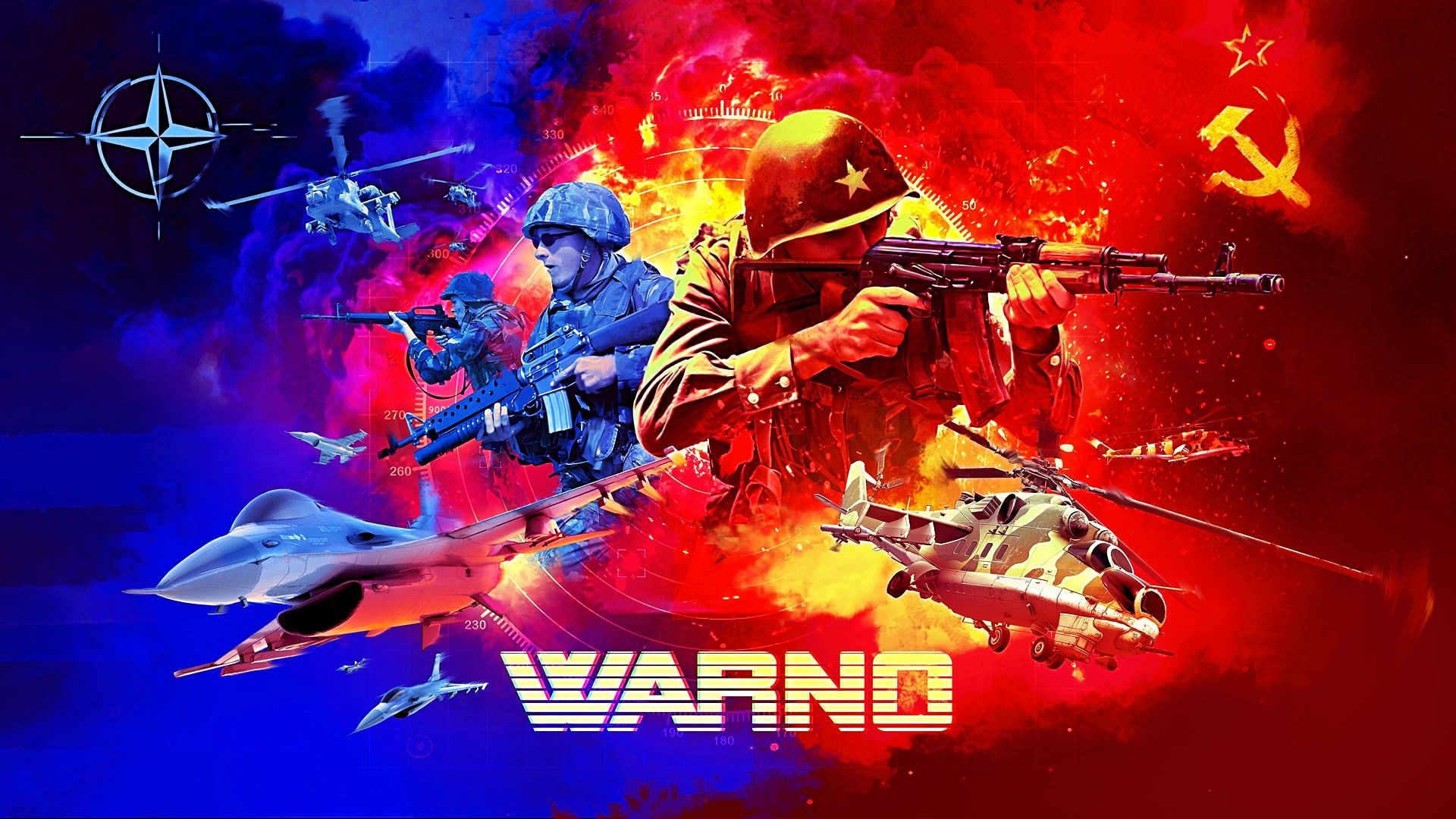
It’s an eerie feeling, to review a game that brings to life an imagined Cold War-era conflict in Europe while an actual Cold War-reminiscent conflict is happening in Ukraine. But such is human nature, the relentless need for power and prestige, so we are once again reliving the past in the present day.
That having been said, I am 100% the target audience for this game. A lifelong reader of Tom Clancy novels and various other technothrillers, the scenes that WARNO brings to life have been played out in my imagination for more than 30 years. And it does bring them to life, in vivid fashion. There is a massive amount of promise in this real-time strategy(RTS) title, with a solid track record from developer Eugen Systems pointing, eventually, toward a fascinating playground for Cold War grognards.
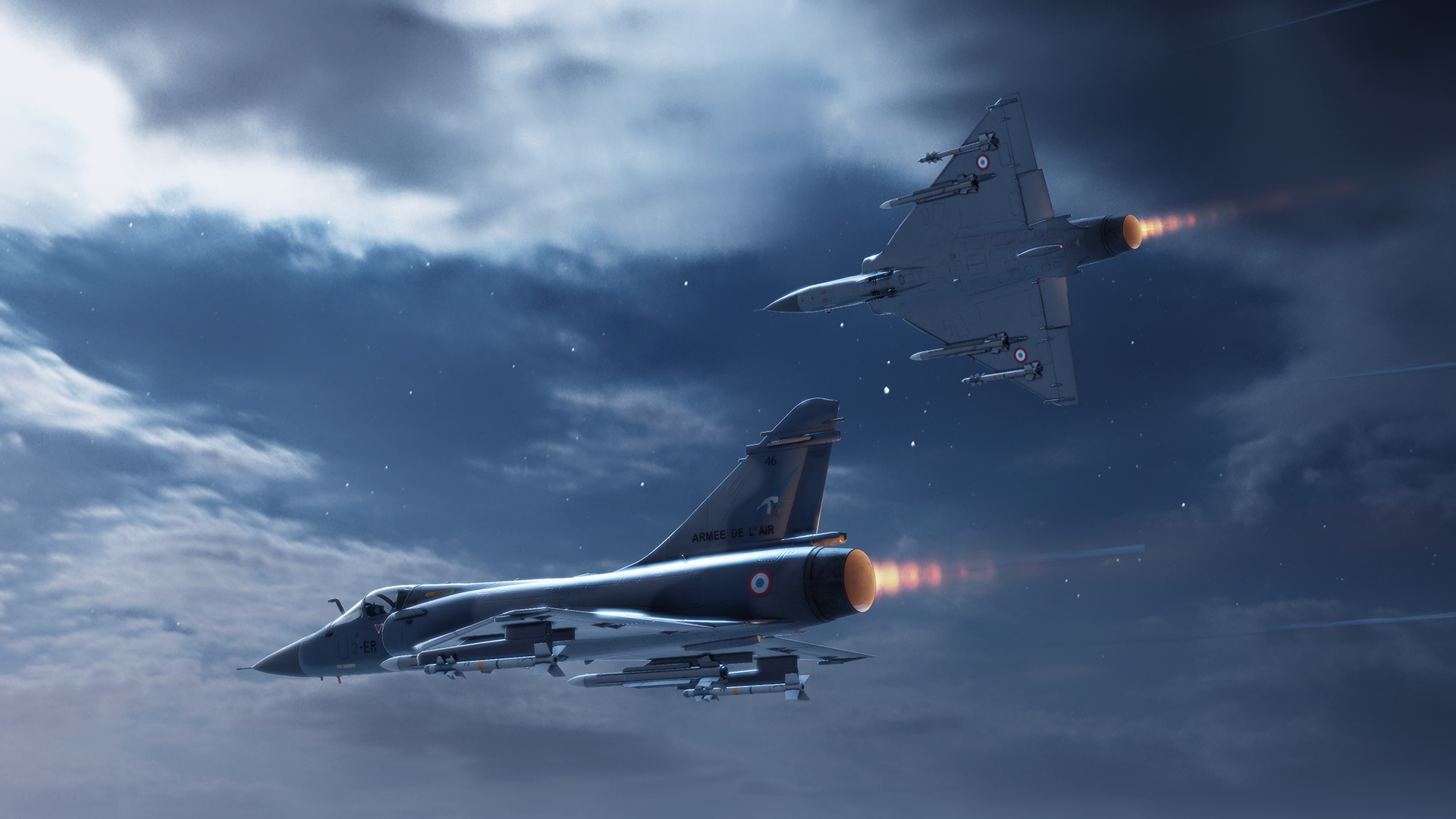
WARNO envisions a World War III scenario in Cold War-era Germany between NATO and the Warsaw Pact countries. The game is in the earliest of Early Access states, so these impressions come from a very small slice of the full package. The game’s Skirmish mode is the only single-player option available as of writing. Multi-player is working in some fashion, though I did not test it and the creation of an account with Eugen is required to use it.
Skirmish allows anywhere from two to twenty players (the ones who aren't you are AI-controlled) to duke it out on roughly 8 maps representing a gorgeously handcrafted, virtual West German landscape, with painstakingly created real-world hardware to do all the shooting and exploding. The hardware is all pulled from reality, appropriate for the late-80s setting of course, with the attention to detail the developer is known for at the very center of the experience.
Full of sound and fury
Though not the most important part of an RTS, the graphics are a good place to start, and they are truly fantastic, beginning with the landscapes themselves. Zoomed out to the fullest extent, the bird’s eye view gives a vantage point with which to plan your strategy in broad strokes. But with a scroll of the mouse wheel, you can zoom in anywhere, from blades of grass and individual trees to the smallest of buildings in the towns that dot the map. In those towns, cars sit abandoned with doors ajar, their occupants clearly having fled in the face of existential threats raining down from above.
The details make the cities feel real, even though at this point there are no civilian inhabitants modeled in the game (it’s unclear if there ever will be). And once the shooting starts, the cities and lands show the cruel fate of war, exploding and burning, convincingly devastated by the combat taking place upon their backs. Dust plumes rise from vehicles plowing across fields, over hills, along roads. Dark smoke rises to the sky, marking the end of a tank here, a mortar there, and countless lives everywhere.
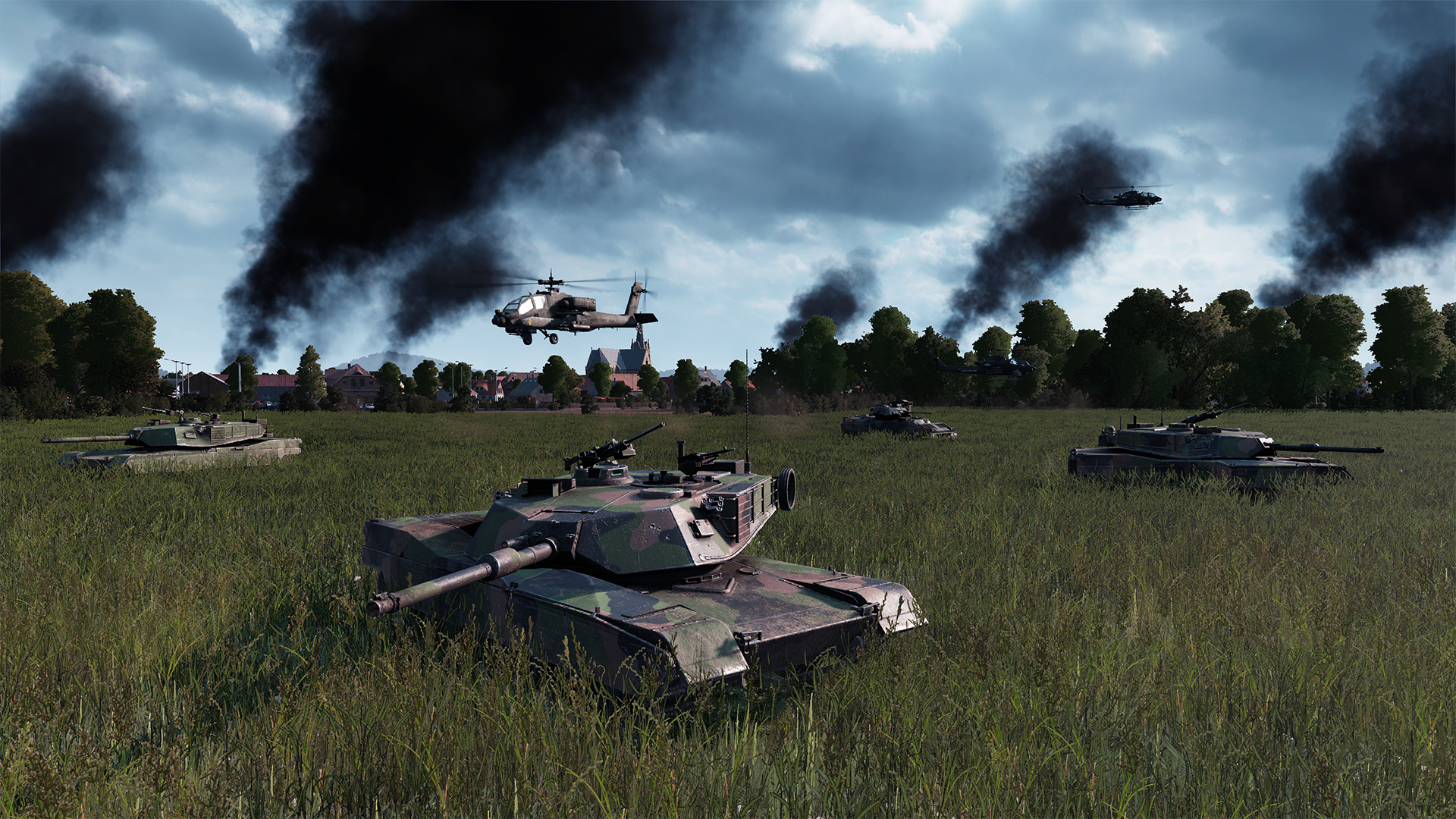
Once combat is joined, the spectacle is a sight to behold. With a wide view, you can watch as mortars trace their deadly arc towards enemy positions, tracer fire streaks across the map, and smoke trails crisscross the sky. Planes streak low to attack ground targets and fighter jets cycle off missiles and flares in their attempts to both kill the enemy and avoid their own deaths.
Zoom in once more and watch each lovingly crafted tank fire its devastating main gun, flames belching forth in great gasps as the machines rock backward convincingly. Armored personnel carriers zip across the land firing their 50-caliber guns and anti-tank missiles zip away from their launchers on the way to deliver their deadly payload.
It’s all very heady stuff, and the artists are to be commended for their work. In a game like this, authenticity is essential, and it appears much work has gone into making the player see that these virtual units look, feel, and operate as closely as possible to their real-world counterparts.
Part and parcel of the experience is the sound design, and Eugen has gone to great lengths to make this a convincing and essential part of the player’s enjoyment. Sampling in real life the units that are portrayed in the game leads to an impressive soundscape that truly adds to the experience. From the squeaking of tank tracks to the whirring of machine guns, the concussion of tank cannons to the sound of helicopter rotors, it’s all here.
The unmistakable sound of the United States A-10 Warthog’s GAU-8 cannon sticks out in my mind, sounding so spot-on it's as if it was lifted directly from battlefield videos. Audiophiles will want to set up a few AI-only engagements just to zoom in on the various units and enjoy the sounds of the battlefield as war explodes around them. Radio traffic is present here as well and really adds to the feeling of being in the chaos, as enemy sightings and reports of contact abound, all realistically voiced. The overall feeling is one of truly being on the field, and a good pair of headphones will greatly add to the sense of immersion.
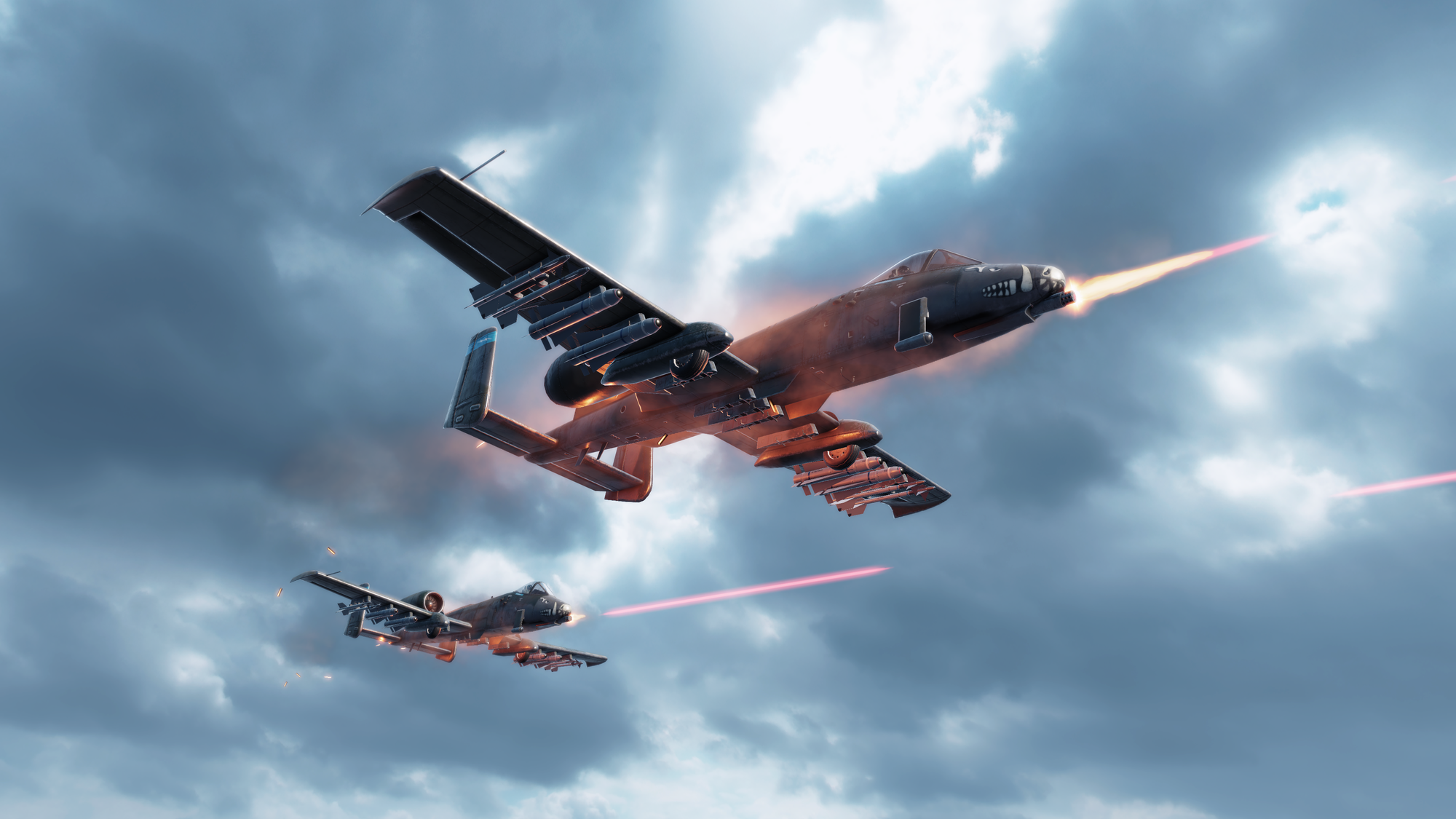
Setting the stage for battle
Hardcore strategy fans may scoff that the graphics are nice but ultimately unnecessary, so let’s discuss how WARNO actually plays, shall we? It is important to note that, while there is a manual to be read, having some degree of familiarity with the RTS genre is imperative at this point, as there are no tutorials and very little hand-holding here. The learning curve can be quite steep in this early access state of the game’s development. The devs have added some useful mouse-over tooltips that help the situation, but in the heat of battle, it's sometimes hard to rely on those.
Clicking into Skirmish mode from the main menu gives a few options, with the map choice being chief among them. One map is long and narrow, making quick conflict inevitable. Other maps are designed for anywhere from 4 to 20 players, with the attendant increase in size making it possible to hold massive battles that could take hours to set up. Importantly, at this stage, only one game type is available, that being Capture the Flag where strategic points on the map must be taken and held, though other types are sure to be included in later updates.
Once the map is chosen, players pick how to populate it, as they choose their own country while assigning AI players to allied and opposing forces. Those AI players have multiple levels of intelligence so choosing your level of challenge is simple. At the time of writing, the game offers the United States, the Soviet Union, West Germany, and East Germany as combatants, with more to come in later updates. Oddly I had no luck in creating a true AI vs AI match here, as it seemed there always had to be a player-controlled faction. You can place multiple AI-controlled forces on each side of the conflict, but you will always be controlling a force, something that may be changed later in development.
Players can choose premade battlegroups with infantry-heavy or armor-heavy loadouts, or they can create their own from the various smaller units that make up a country’s armies. Command, artillery, and air units are part of the mix as well, and the groups can be built down to the company level. There’s a lot of customization on offer here that is beyond the scope of this piece, but suffice it to say you can go to battle with whatever you want to put on the field. Set a few game conditions like how many points are required to win and how long the matches will last, and you’re off to battle.
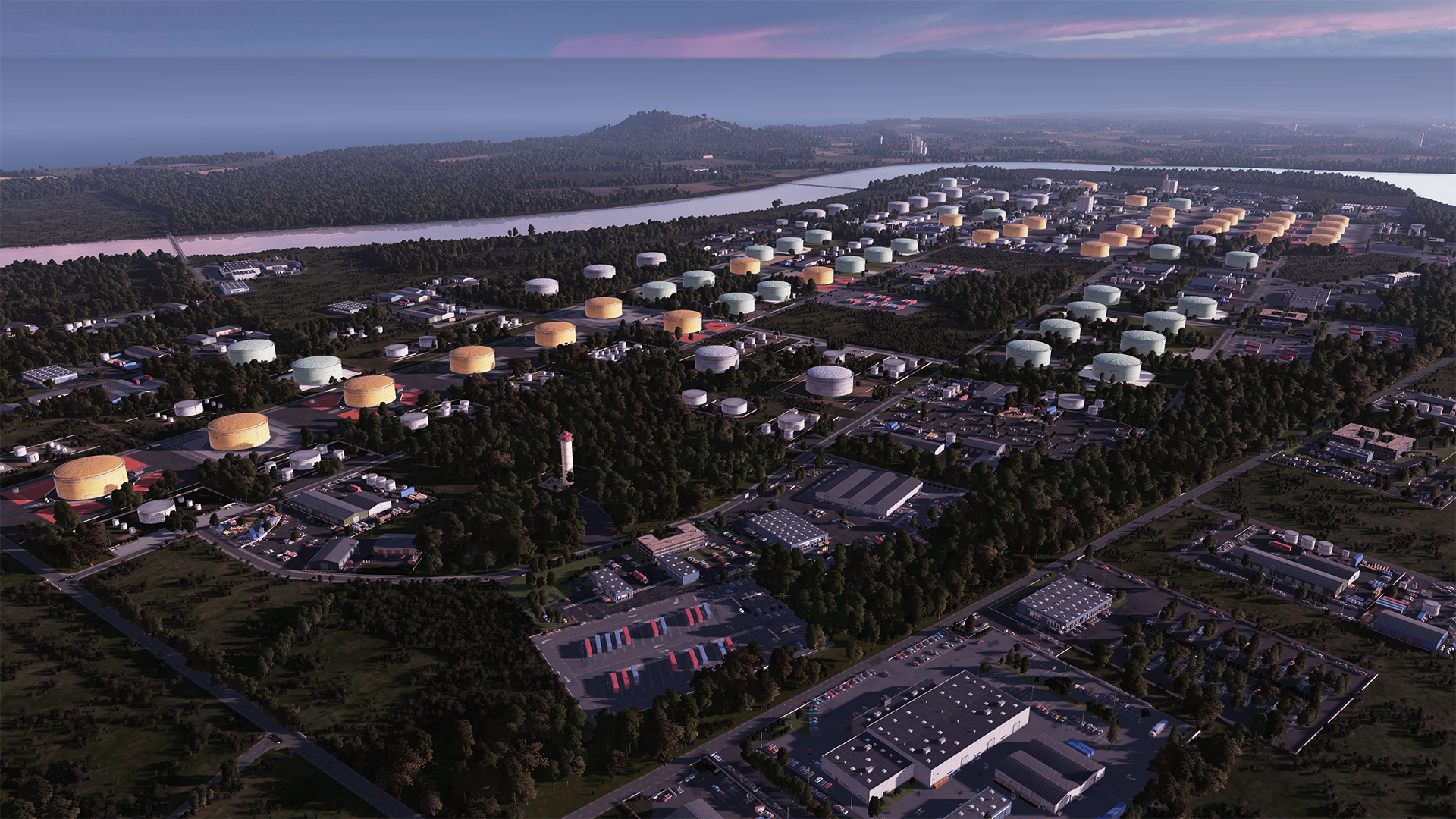
Controlling the field
You’re given a zoomed-out view of the chosen map, and with the deployment menu, you’re ready to set your forces upon the field of battle. You can choose to let the game auto-deploy the battlegroup based on the given budget of points, or you can place each individual unit on the battlefield yourself. This level of control is appreciated and gives the opportunity to try out various groupings of units. I learned the hard way, for example, that forgetting to put an anti-air unit into a group with half a dozen tanks is a recipe for disaster.
Once your forces are on the field, just select “Launch Battle” and the fun begins. Clicking on an individual unit shows a menu in the bottom-right corner of the map with the usual orders such as “Move Fast”, “Hunt” for enemies within a certain area, “Reverse”, and even orders for dropping smoke to obscure the field. Groupings get options for so-called “Smart Orders”, where you can designate an area to seize or a position to hold, with others varying on group composition.
Selecting a unit or units and right-clicking a destination gets them moving. Pathfinding, long the bugaboo of RTS games, seems mostly competent here, though much polishing is sure to happen during the early access period. Units will deploy under cover of a forest instead of sitting out in the open, and generally act in an intelligent way. Those in transit will use roads where possible and cut across areas with movement penalties only when necessary.
Combat is handled well, as selecting a unit or group and right-clicking on an enemy unit will get them attacking quickly. You can also choose the “Fire Position” command, which appoints all selected units to attack a certain point regardless of enemy presence. This is useful for attacking buildings where you suspect enemies are hiding, or simply to destroy a strategic point to deny it to the enemy. When selecting the unit or area to attack, the game gives a nice overlay showing if your unit has a line of sight to the target, the range to the target, the weapon that will be used, and your unit’s chance to hit and chance of victory in the encounter.
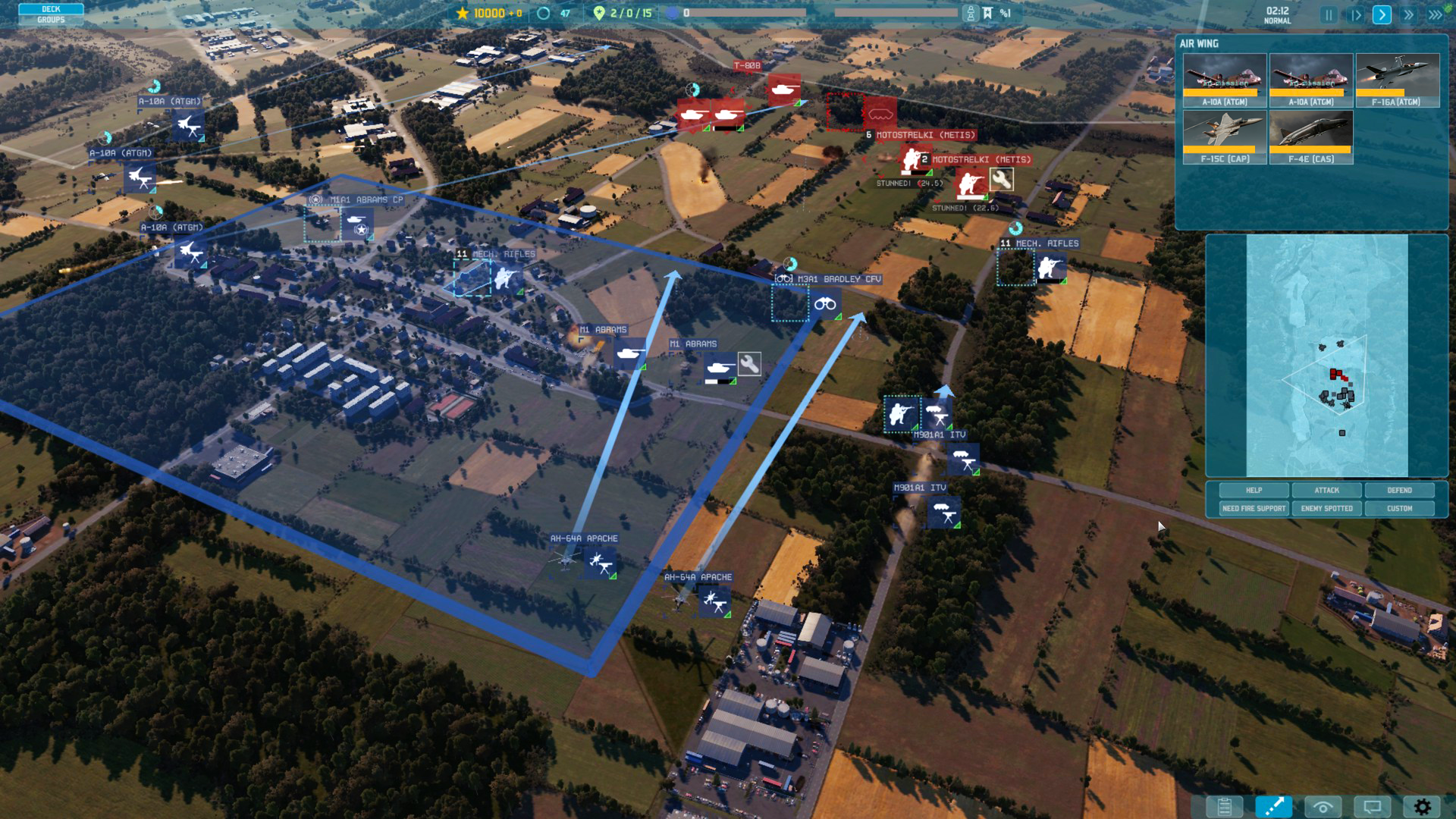
Airpower is represented through a variety of airplanes and helicopters, and right now it feels a bit limited. Helicopters can only be told to land and change altitude, but there is no option to send them to an altitude that will protect them from small arms fire and truck-mounted by 50-caliber guns.
Choosing a fighter jet and giving it a point on the battlefield will have it loiter over the field in something resembling a combat air patrol, looking for enemy air targets to engage. Ground attack craft will do the same, though they don’t appear as adept at picking out emerging targets, and don’t seem capable of engaging air targets even though they have 20-mm cannons on board with which they could go after a helicopter. It’s best to give them a specific target to attack and keep them as your active unit to be able to task them to another ground target if one should pop up.
As a round progresses and your “income” of points increases (based on a timer that simulates “turns”), allowing you to bring additional forces to the field, you can select which units to bring forward from reserves in rearward areas. Be careful to allow for their transit time to the front lines so as not to get caught without critically needed pieces.
Fog of war is here in a way that feels very apropos for this era. This was largely before GPS, satellites, and all of that came into major use on the tactical battlefield. Thus, if you don’t have a unit in contact with the enemy, you can’t see them on the map. Often you will see a unit marker pop up for a second and then disappear. It is very easy to send a helicopter on a recon trip and have it be snuffed out of existence by an unseen enemy grouping that takes it down with 50-caliber cannons or soldier-carried anti-air missiles. Ground forces can blunder into a battle they can’t handle, so cautious movement and leapfrogging between areas of cover will serve your forces well. This can lead to some frustration but it is true to how battles likely would have played out at the time.
Early access issues
I noticed a few wonky things from the AI, such as troop carriers unloading their troops too far away from the objectives they were intended to occupy, thus leaving them unnecessarily open to attack. Stationary units generally do a good job attacking targets of opportunity but don’t always switch quickly to new targets when the one they were tasked to destroy is killed. And it is common to see guided missiles fly crazily into the air and explode harmlessly if the unit they were tracking is destroyed. All of this is relatively minor and almost guaranteed to be ironed out later in development.
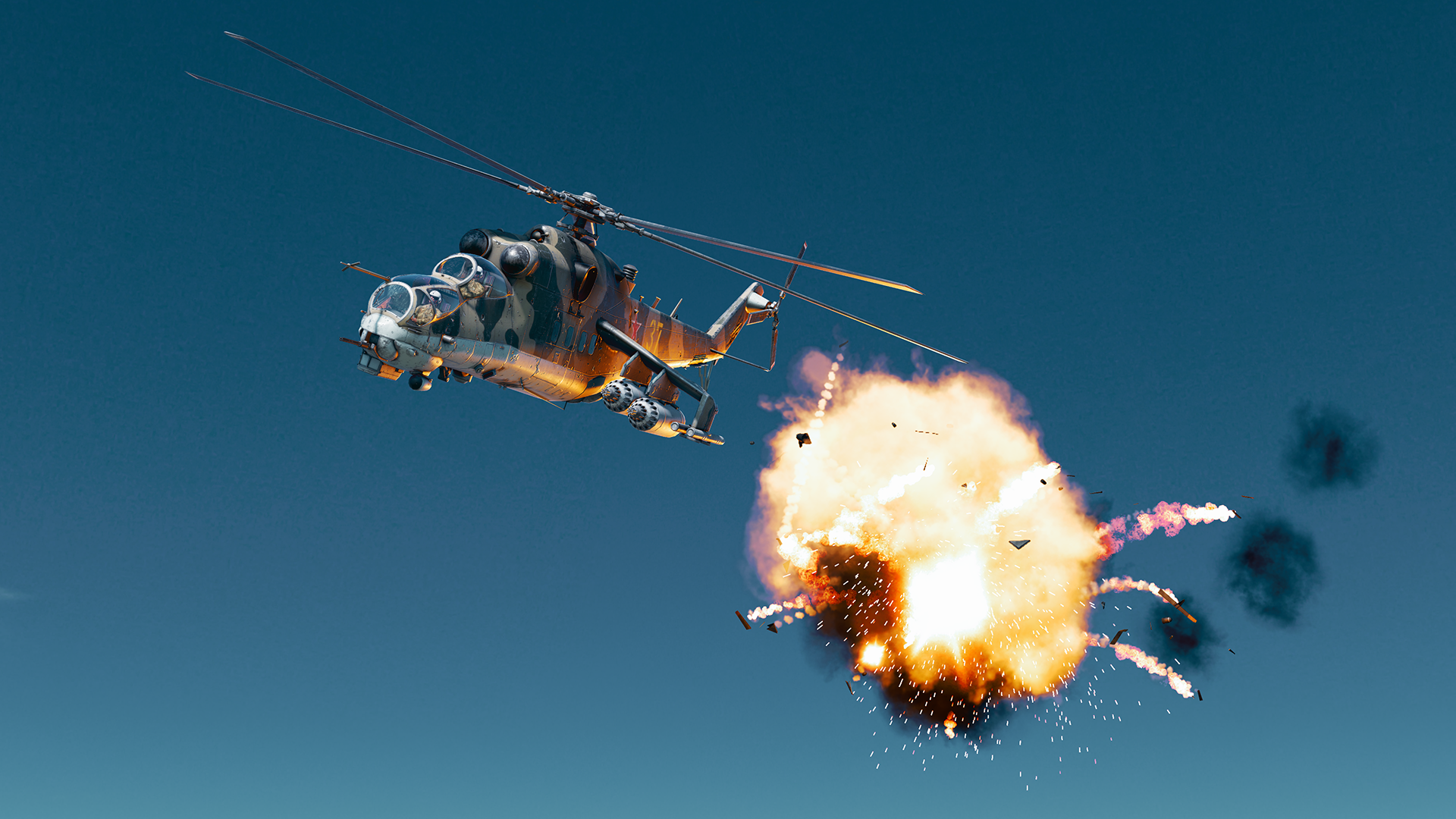
Collision detection is also a bit haphazard, as troops and motorized units will routinely walk directly through buildings on their way to wherever they are headed. Those same units can then be seen knocking over a single lamp post in the parking lot of a supermarket.
Camera control can leave a bit to be desired as well, but I’ve noticed it improving with each update the developer pushes out. The WASD keys control the large cardinal movements, while the mouse wheel controls the zoom, and holding down the mouse wheel while moving the mouse controls the 360-degree X&Y-axis movement of the camera. It can be easy to move past or zoom in through the item you wanted to look at, and while it is relatively easy to correct, trying to see everything in the heat of battle can be a slight headache. Double-clicking one of your units does slave the camera to it, which is helpful for following a particular engagement and especially when trying to stick with a fast-moving aircraft.
An incredibly promising playground
There is so much to be excited about in the future of WARNO. It truly seems capable of delivering on the promise of the long-pondered NATO vs. Warsaw Pact conflicts that seemed inevitable in the Cold War years.
Eugen Systems has plans to add two more nations (the UK and France) as well as four different turn-based Army General campaigns to the final version of the game. Those campaigns look to be something similar to the Total War games, where turn-based strategic movement on the world map begets real-time tactical battles on smaller maps. More than 600 different units will be represented, with local and online matches available and Skirmish modes allowing for dream (or nightmare) scenarios to play out at your behest.
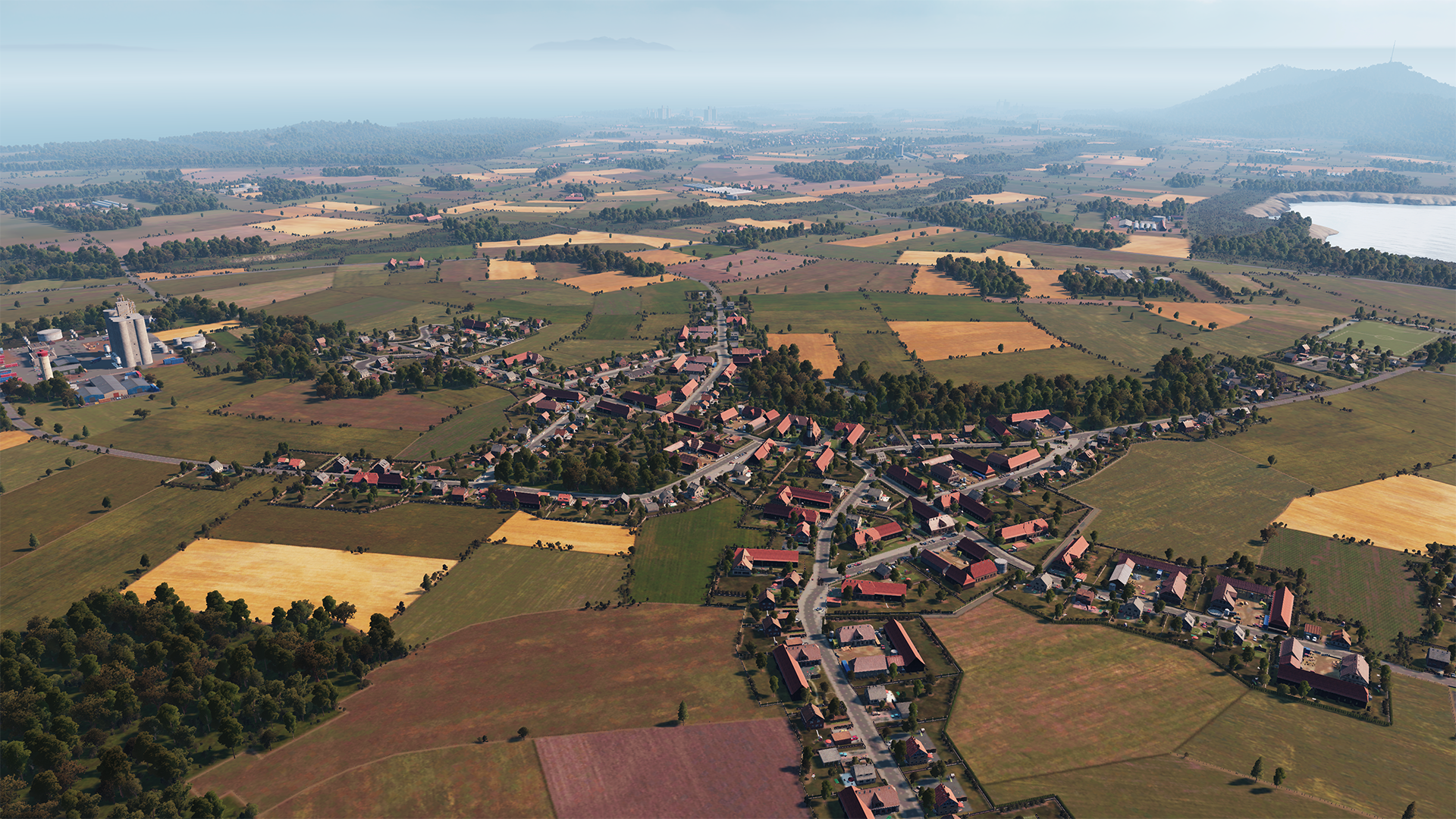
The game needs expanding and polishing to be sure, but the foundation is rock-solid. There’s realism where it is required, flash and panache in the graphics and sound, and gameplay that makes you want to play another round and try out another strategy. Next up for me is creating a group of artillery, parking it on top of a mountain inside a ring of AA guns and missiles with patrolling aircraft above and tanks below to protect the guns. Can artillery, largely on its own, win an engagement in the field? I guess we’ll find out.
WARNO has the potential to be an alternate-history fan’s dream game, creating a sandbox where enemies can fight enemies, friends can fight friends, and the world’s greatest superpowers can match wits and might on the blood-soaked fields of Europe. I’m going to be here for it, will you?
